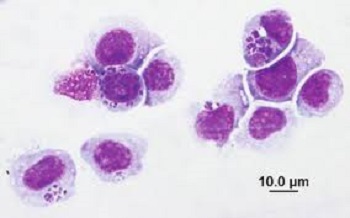Rickettsia rickettsii - Pathogenesis, Virulence Factor, Actin bases Motility
Virulence Factor of Rickettsia rickettsii
The virulence factor of Rickettsia rickettsii includes:
actin-based motility for cell spread
induced phagocytosis
phospholipase
hemolysin C
Pathogenesis of Rickettsia rickettsii
Pathogenic effects were seen when it invades the endothelial lining of the vascular system within various organs
infection occurs via the bite of a hard-shelled tick
Rickettsia rickettsii attaches to endothelial cells via Rickettsial outer membrane protein A (rOmp A), rOmp B, and Mammalian receptor Ku70
Rickettsia is phagocytosed by the host cell into the cytoplasm. But it escapes from the phagosome before the formation of the phagolysosome using membranolytic enzymes (phospholipase A2 and hemolysin C)
Replication by binary fission occurs in the cytoplasm or also may occur in the host cell nucleus
cell-to-cell spread occurs by actin-based motility
the host cell is damaged due to the rupture of vascular endothelial cells leading to inflammation and blood leakage. Endothelial cells are injured due to toxic reaction
O2 and N species, damage to cell membrane on rickettsial exit, Tc- induced apoptosis of infected host cell
cause vasculitis and vascular lesion found in the skin, liver, heart, CNS, and adrenal gland
cytokines (IFN-γ) are also induced

Fig: Rickettsia rickettsii (Source: Wiley Online Library)
Actin based motility of Rickettsia rickettsii
Rickettsia rickettsii uses host cell actin cytoskeleton to promote intracellular mobility and cell-to-cell spread by the assembly of a distinctive “comet tail’ that consists of long, unbranched actin filaments.
Bacterial protein Rick A assembles branched actin networks.
Host Arp 2/3 complex is involved in actin-based motility are activated by the pathogen itself.